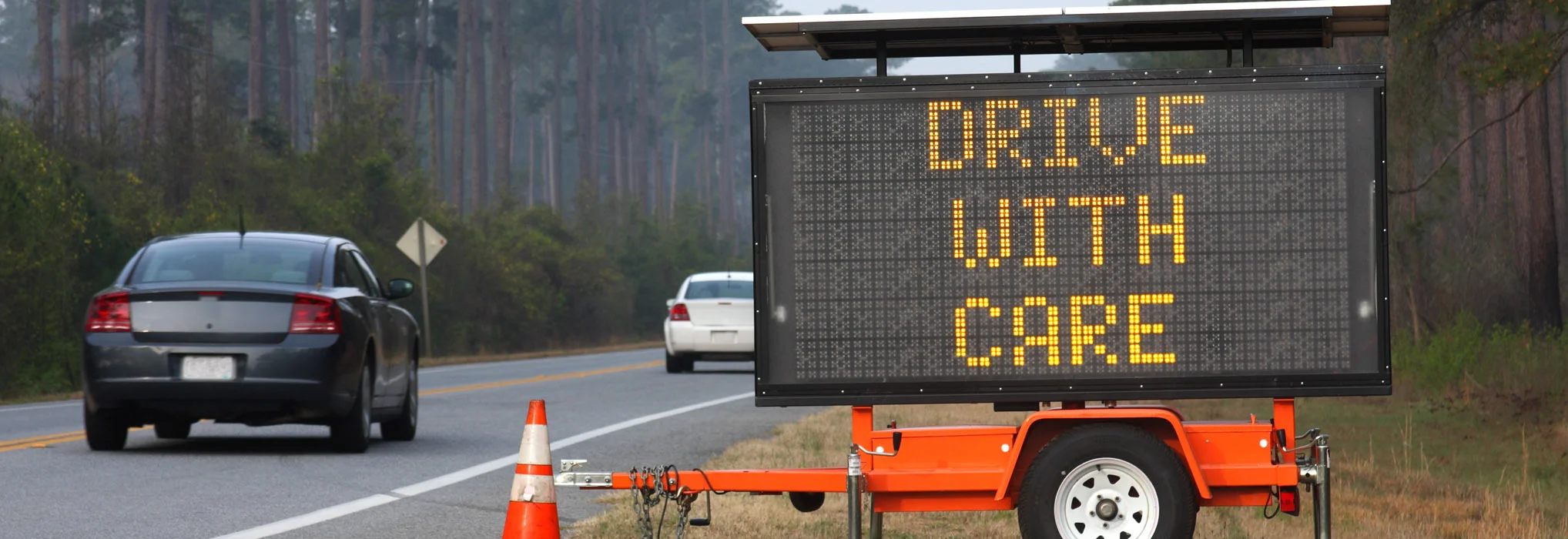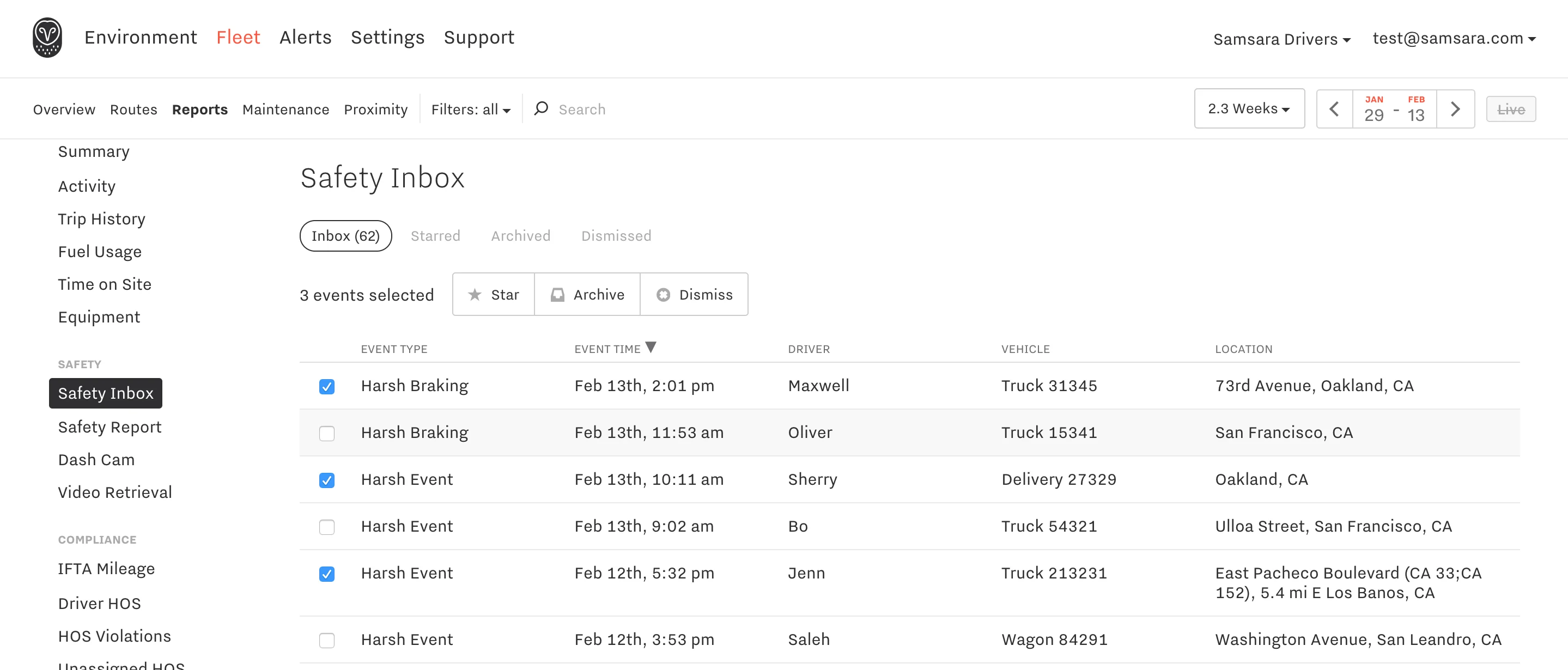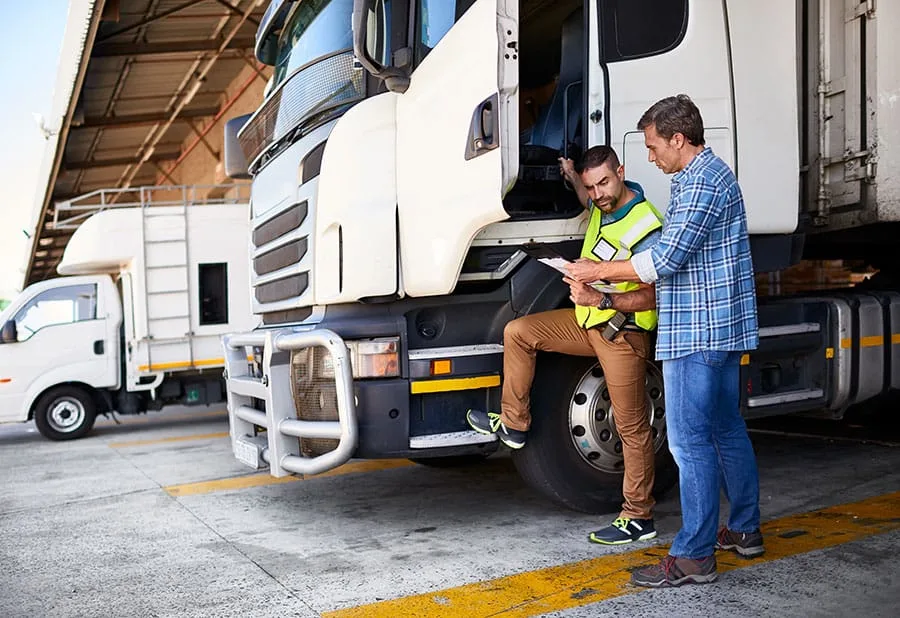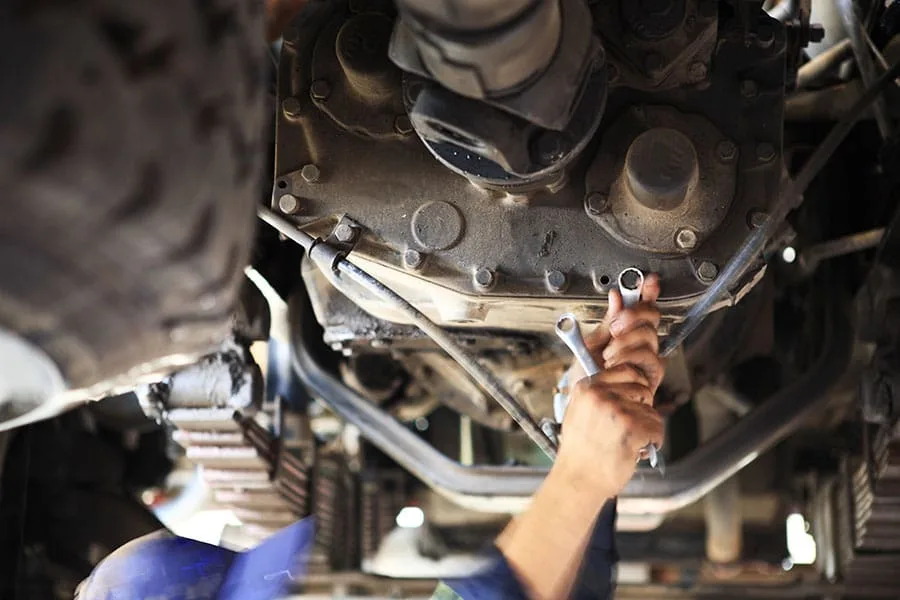Safety
5 Elements That Will Elevate Your Fleet Safety Program
April 4, 2018

“There’s been an accident.”
They’re the words every fleet manager dreads. When you have employees driving hundreds or even thousands of miles every week, motor vehicle accidents are unavoidable. But many of the leading factors in driver-caused accidents are preventable and introducing an effective fleet safety program will help keep your drivers safe, protect your company, and reduce vehicle accident costs.
As we recognize Distracted Driving Awareness Month, it's a good time to take stock of your fleet safety program. So what distinguishes a great fleet safety program from standard ones? Here are five key aspects to building a stand-out fleet safety program:
1. Visibility
Unlike previous eras, when companies could only respond to incidents after they happened, technology now makes it possible to monitor driver behavior and respond proactively.
Today’s technologies provide unprecedented visibility into driver and vehicle safety. Fleet tracking systems, like Samsara, make it easy to gain real-time insights into the state of your fleet - from immediate location to maintenance needs to speeding. And when dash cameras are added into the mix, you can combine this data with footage to better understand your driver’s behavior and external conditions.

For example, with Samsara, when a harsh braking incident takes place, an incident alert appears on the dashboard, giving fleet managers instant updates and insight into what happened. By viewing the safety report, fleet managers can identify their safest and riskiest drivers and provide immediate driver training to employees who need assistance.
2. Driver Training
Regular coaching is critical to building a culture that encourages safe driving. These ongoing training sessions can take a number of forms - from behind-the-wheel activities to broad seminars to in-person feedback - but the most effective fleet safety programs offer tailored feedback and initiatives to drivers based on their experience, performance, and learning style.

New technologies are making it easier to personalize coaching. Hosting one-on-one sessions to review dash camera “game footage” from risky driving incidents is one of the best ways of providing tailored feedback based on individual performance. Since everything is on the record, these conversations or training programs can focus on specific improvements, rather than whether or not wrongdoing took place. Fleet managers can also provide feedback to drivers on the road with in-cab voice coaching.
3. Response
Sometimes, despite defensive driving efforts, workplace injury via accidents can occur. Great fleet safety programs are prepared and have plans in place to respond to the incident efficiently.
The new wave of dash cameras on the market give you a leg up in responding to incidents and dealing with law enforcement officials. With Samsara’s dashcams, fleet managers have access to footage from an incident within moments through automatic uploading. This helps you exonerate drivers and keep driving records clean. Other features - such as a proximity feature that can tell you whether your vehicle was in the area when a complaint was made, or speeding alerts - can also help protect your drivers.

Having the footage on hand helps save you money. The average cost of an accident without an injury is $16,500, which rapidly climbs to $74,000 if there is an injury. With video evidence, you can keep insurance, legal, and claim costs down.
4. Prevention
In addition to responding to issues, your safety program should also help you prevent and avoid unsafe conditions. Whether you have two or two hundred vehicles to your company name, it's important to ensure equipment is safe and vehicle inspections are completed in a timely matter.

New technology solutions can identify unsafe vehicles before they hit the road. Predictive maintenance alerts can flag issues with your vehicles before the light goes on and help you establish a schedule for routine checks or DOT inspections. Meanwhile, digital DVIR notifications put potential issues right on your screen, rather than in a pile of paper next to your desk, ensuring that unsafe vehicles get the attention they need.
5. Commitment
Throughout all of this, your team must see safety as a top priority. Senior leadership will need to demonstrate a firm commitment to the safety program and drivers must buy-in. Technology can certainly help prevent accidents, but without the engagement and support of your entire team, you’re unlikely to see results.
Continuous communication will be key to this effort. Hosting ongoing conversations that put drivers safety records front and center - such as by celebrating individual performances, sharing success stories, or even referencing cautionary tales - will help keep the program top-of-mind and encourage better habits. Advanced fleet management systems, like Samsara, make it easy to quickly share data across all teams using automated, scheduled reports, helping everyone stay looped into the safety rules.

Creating driver-centric safety programs that treat drivers as a partner in your program will help ensure they’re equally invested in its success. When choosing which system to use, put yourself in your employees’ shoes and choose simple, straightforward solutions that easily integrate into drivers’ existing routines.You can also engage and motivate drivers with rewards programs based on rankings and performance. For example, Samsara’s Driver Leaderboards use gamification to foster healthy competition and incentivize drivers to become the best drivers in their fleets.
Conclusion
Accomplishing the steps above is an excellent step toward establishing a fleet safety program. However, a good safety program is always adapting to meet the evolving needs of the industry. Leadership must be prepared to refine and adapt their fleet safety programs to reflect new technologies, policies, and circumstances. Because at the end of the day, investing in safety improvements is an investment in your fleet itself, helping to better position your team and your business for success in the future.
_If you would like to learn more about Samsara's safety offerings, contact us for a demo at www.samsara.com/free-trial today.


















